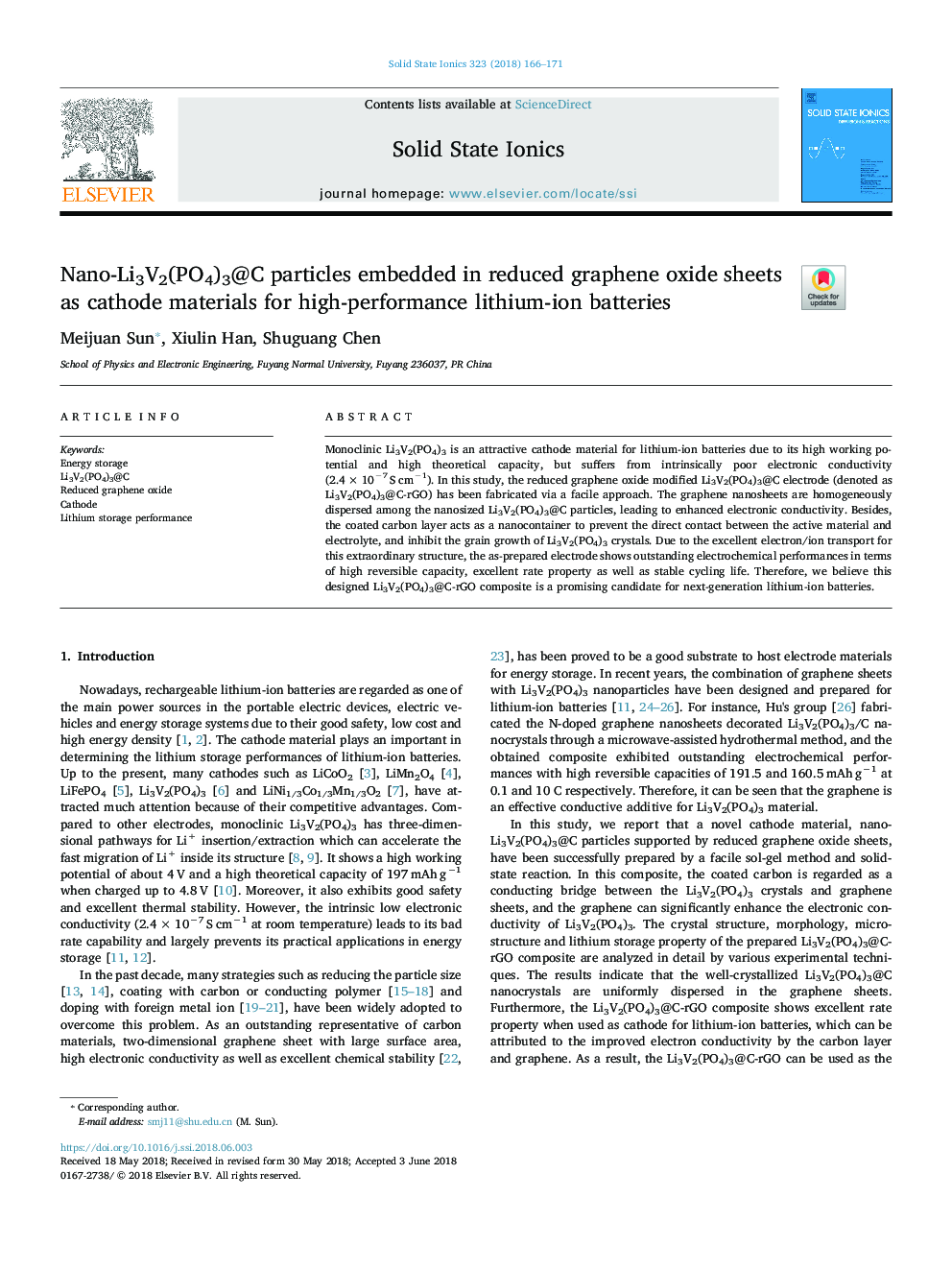| Article ID | Journal | Published Year | Pages | File Type |
|---|---|---|---|---|
| 7744285 | Solid State Ionics | 2018 | 6 Pages |
Abstract
Monoclinic Li3V2(PO4)3 is an attractive cathode material for lithium-ion batteries due to its high working potential and high theoretical capacity, but suffers from intrinsically poor electronic conductivity (2.4â¯Ãâ¯10â7â¯Sâ¯cmâ1). In this study, the reduced graphene oxide modified Li3V2(PO4)3@C electrode (denoted as Li3V2(PO4)3@C-rGO) has been fabricated via a facile approach. The graphene nanosheets are homogeneously dispersed among the nanosized Li3V2(PO4)3@C particles, leading to enhanced electronic conductivity. Besides, the coated carbon layer acts as a nanocontainer to prevent the direct contact between the active material and electrolyte, and inhibit the grain growth of Li3V2(PO4)3 crystals. Due to the excellent electron/ion transport for this extraordinary structure, the as-prepared electrode shows outstanding electrochemical performances in terms of high reversible capacity, excellent rate property as well as stable cycling life. Therefore, we believe this designed Li3V2(PO4)3@C-rGO composite is a promising candidate for next-generation lithium-ion batteries.
Related Topics
Physical Sciences and Engineering
Chemistry
Electrochemistry
Authors
Meijuan Sun, Xiulin Han, Shuguang Chen,
